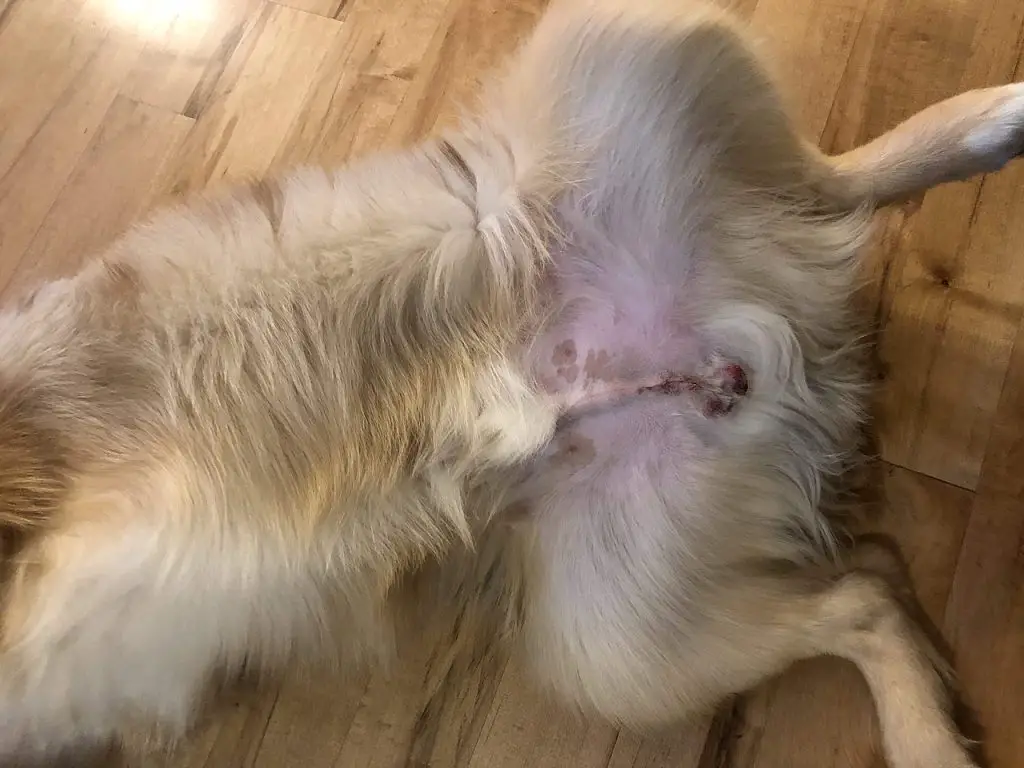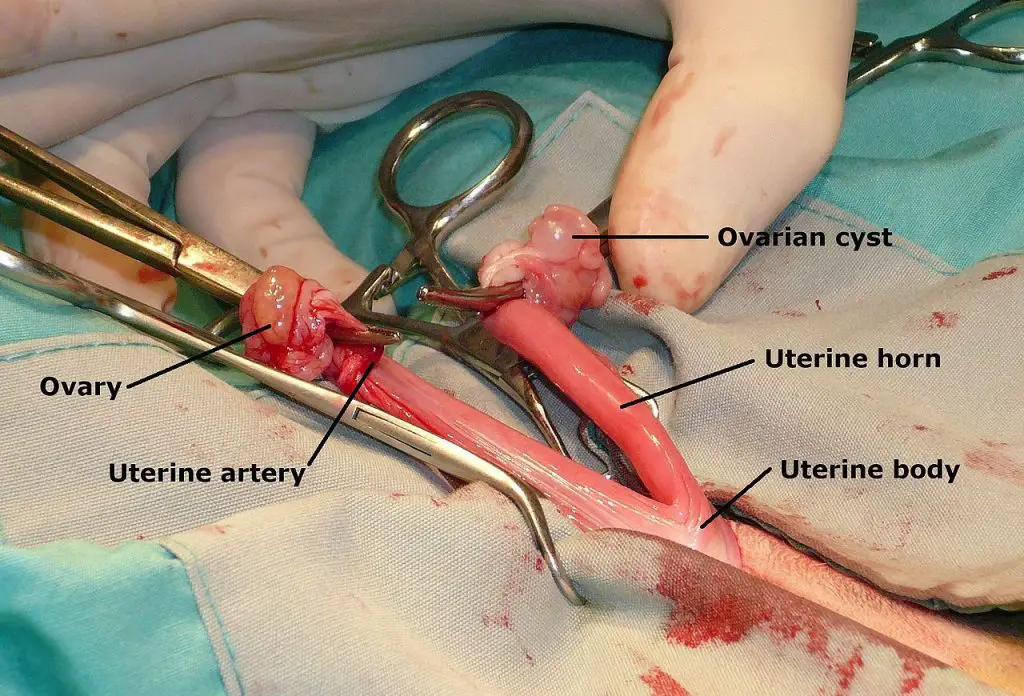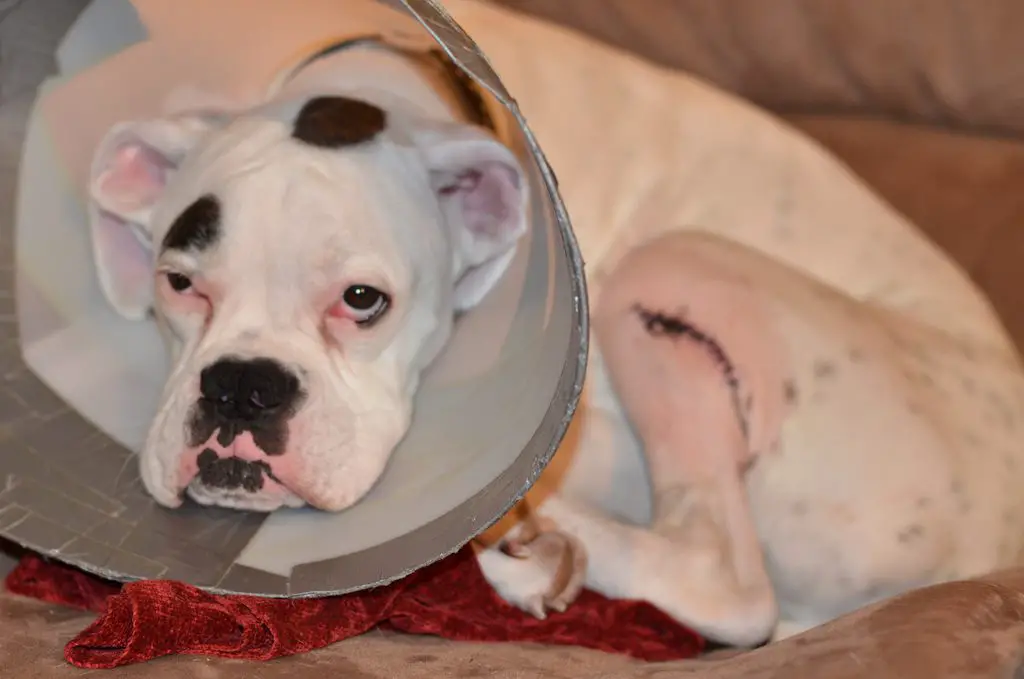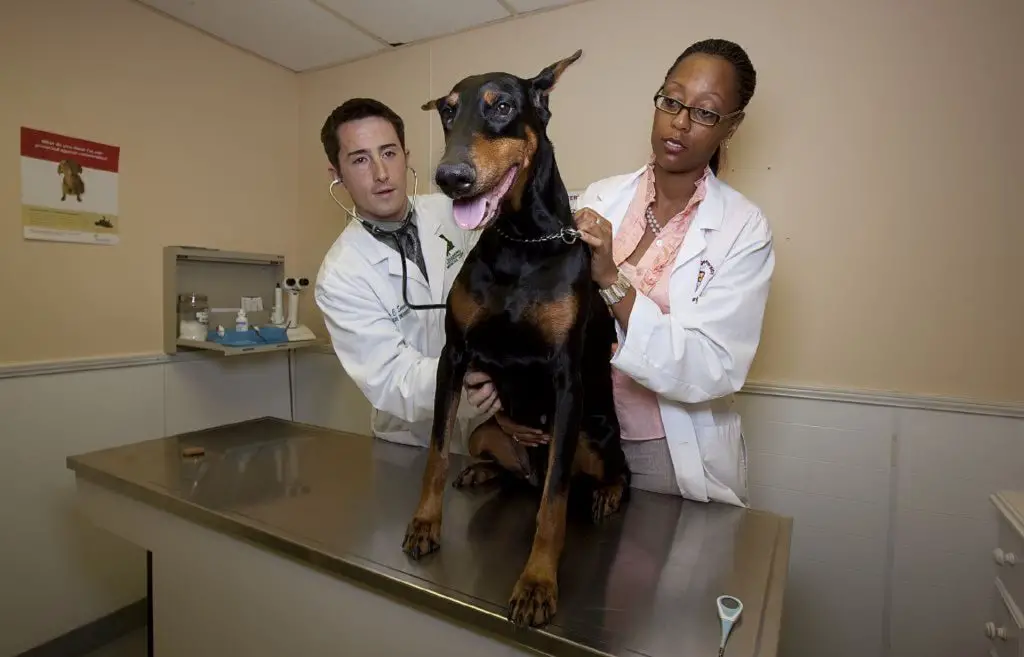Many dog owners are curious about why their spayed dog is still bleeding. It can be a confusing time for both pet owners and their dogs.
In this blog post, we will answer all of your questions about dog spaying and bleeding. We’ll provide information on the typical timeline for healing after surgery, as well as tips to help keep your dog comfortable during her recovery.
Key Takeaway
- A spayed dog that was in heat at the time of surgery may continue to bleed due to residual reproductive hormones, but any persistent or excessive bleeding should be checked by a vet to rule out complications.
- A dog can be spayed while in heat, but it’s generally not recommended due to increased risks of complications such as excessive bleeding because of the increased blood flow to the area.
- Female dogs should not bleed due to heat after being spayed, but any post-operative bleeding or unrelated bleeding from the private area should be promptly checked by a vet to rule out complications or other health issues.
Why Is My Dog Spayed While In Heat Still Bleeding?

If your dog was spayed while in heat and is still bleeding it can be due to a number of reasons including the surgery itself can cause the bleeding, your dog’s hormones are still out of balance, or your dog has a uterine infection.
If your dog is still bleeding after being spayed while in heat, it could be due to a few different things. One possibility is that the incision was not properly closed. Another possibility is that your dog has an infection or other complication at the site of the incision. In this case, a visit to the veterinarian is mandatory.
After spaying, it is common for a dog’s hormones to become imbalanced. This can lead to a variety of problems, including weight gain, mood swings, and bleeding. While hormone imbalances are often temporary and resolve on their own, in some cases they can be permanent.
If you notice any changes in your dog’s behavior after spaying, it is important to talk to your veterinarian. They can help you determine if the problem is hormonal and prescribe the appropriate treatment.
Lastly, If your dog is spayed while in heat and is still bleeding, it can be due to a uterine infection. This can be a very serious condition and requires immediate medical attention.
A uterine infection in dogs, also called pyometra, is a serious condition that can occur when the uterus becomes infected. This can happen after a heat cycle or during pregnancy.
If left untreated, it can be fatal. Symptoms of pyometra include increased thirst, bleeding, urination, and appetite; vomiting; diarrhea; and abdominal pain. Treatment typically involves antibiotics and surgery to remove the infected uterus.
Can a Dog Be Spayed While In Heat?

Yes, a dog can be spayed while in heat. However, there are a few things to keep in mind. First, the surgery will likely be more expensive since it is more complicated.
Second, your dog may experience some discomfort and bleeding during the procedure. Finally, you will need to take extra care of your dog after the surgery to ensure a successful recovery.
If you decide to get your dog while in heat, be prepared to pay extra. In order to ensure the safety of your dog, veterinarians must take several precautions. First, they will need to do a blood test to make sure that your dog is not pregnant.
If she is, the surgery has to be delayed until she has had her litter. Then, the veterinarians will monitor your dog closely during the surgery as they are more prone to bleeding.
Finally, after the surgery, your dog will have to be on pain medications for a few days as she may be in more discomfort than usual. All of these factors add up to a higher cost for this type of surgery. Usually, spaying your dog costs between $200 and $400. However, spaying your dog while in heat can easily cost $500 or more.
There are several factors to consider when deciding whether or not to spay a dog while she is in heat. The most important factor is the age of the dog. If the dog is young, there is a greater chance that she will experience complications from the surgery.
Another factor to consider is the health of the dog. If the dog has any health problems, it may be best to wait until she is no longer in heat before having the surgery.
Can Female Dogs Still Bleed After Being Spayed?

Yes, female dogs can still bleed after being spayed. This is because the surgical procedure to remove the ovaries and uterus doesn’t stop the production of hormones.
The bleeding should eventually stop on its own, but if it continues for more than a few days or is heavy, you should contact your vet. Spaying your dog can have many benefits, such as reducing her risk of ovarian cancer and pyometra (a life-threatening infection of the uterus).
To spay a dog, a veterinarian will make an incision in the animal’s abdomen and remove the ovaries and uterus. The fallopian tubes may also be removed to prevent future pregnancies. Spaying is usually performed while the dog is under anesthesia. The entire procedure generally takes less than 30 minutes.
Afterward, the incision is closed with stitches and the dog is awake in recovery within an hour or so. Complications from spaying are rare but can include infection, bleeding, or adverse reactions to anesthesia. Most dogs recover from surgery without any problems and can return home the same day.
Spaying your dog has many benefits. It prevents unwanted pregnancies and helps reduce pet overpopulation. Spaying also eliminates heat cycles, which can be messy and inconvenient. In addition, spaying may help your dog live a longer, healthier life. Some studies have shown that spayed dogs are less likely to develop certain types of cancer than those who haven’t been spayed.
Does Spaying Stop Periods In Dogs?

Spaying effectively halts the reproductive cycle in dogs, eliminating their heat periods and associated bleeding.
When a dog is spayed, a procedure also known as an ovariohysterectomy, both the ovaries and the uterus are removed.
This not only prevents the dog from becoming pregnant but also stops the heat cycles. Heat cycles in dogs, much like periods in humans, involve hormonal fluctuations and can lead to symptoms such as bloody discharge.
However, once a dog has been spayed, these cycles cease, effectively stopping any associated bleeding. It’s important to note that any bleeding after the recovery period from the surgery could indicate a health issue and should be checked by a vet.
While a dog can be spayed during a heat cycle, it’s generally discouraged due to the increased risk of complications.
How Long Does It Take For a Dog’s Hormones To Balance After Being Spayed?
The hormonal balance in a dog typically takes a few weeks to normalize after undergoing a spaying procedure.
When a dog is spayed, her estrogen and progesterone levels begin to fall steadily.
These hormones, which are responsible for the dog’s reproductive cycle and related behaviors, can take a few weeks to a maximum of around three weeks to fully diminish.
During this time, you may still notice some signs of hormonal behavior. However, once this period is over, the hormones should be out of her system and any associated behaviors should lessen.
It’s important to note that each dog is individual and the exact timeframe can vary. If you notice prolonged or concerning symptoms, it’s always best to consult with a vet.
Also, there are methods to enhance a female dog’s ability to produce estrogen even after the spay procedure, which could be considered under veterinary advice says Embrace Pet Insurance.
FAQs
Q: What is spaying?
A: Spaying, also known as ovariohysterectomy, is a surgical procedure performed on female dogs to remove the ovaries and uterus. It is a common procedure done to prevent dogs from reproducing and to eliminate the risk of certain reproductive health issues.
Q: Does spaying a dog stop her from going into heat?
A: Yes, spaying a dog will prevent her from going into heat. When a female dog is spayed, her ovaries, which produce the hormones that regulate her heat cycle, are removed. This eliminates the hormonal fluctuations that cause heat cycles.
Q: What is the average age to spay a dog?
A: The recommended age to spay a dog is typically between 6 to 9 months. However, the optimal age for spaying can vary depending on the breed and size of the dog. It is best to consult with your veterinarian to determine the most appropriate age for spaying your specific dog.
Q: How long does a dog bleed after being spayed?
A: A dog may have some vaginal bleeding for a few days after being spayed. This is typically a normal part of the healing process and should gradually decrease and stop. If the bleeding persists or becomes heavy, it is important to contact your veterinarian for further evaluation.
Q: Can a spayed dog still have a heat cycle?
A: A spayed dog cannot have a heat cycle because the reproductive organs responsible for the cycle, namely the ovaries and uterus, are typically removed during the spaying procedure. Without these organs, a spayed dog will no longer experience heat cycles.
Q: What are the signs of complications after spaying a dog?
A: Signs of complications after spaying a dog may include excessive bleeding, swelling, discharge, pain, fever, or changes in behavior. If you notice any of these signs, it is important to contact your veterinarian immediately for further assessment and appropriate treatment.
Q: How long does it take for a dog to recover after being spayed?
A: The recovery time for a dog after being spayed can vary depending on factors such as the dog’s age, overall health, and the surgical technique used. In general, it can take up to 10-14 days for a dog to fully recover from the surgery. During this time, it is important to follow the post-operative care instructions provided by your veterinarian.
Q: Is it normal for a spayed dog to bleed after exercise or activity?
A: It is not normal for a spayed dog to bleed after exercise or activity. If you notice any vaginal bleeding in your spayed dog after exercise, it is important to consult with your veterinarian to determine the cause of the bleeding and ensure that your dog is not experiencing any complications.
Conclusion and final thoughts
In conclusion, spaying your female dog while she is in heat can be quite tricky and has its risks.
However, it is still recommended by veterinarians and animal welfare organizations because of the numerous benefits it provides for both the dog and their human owners.




